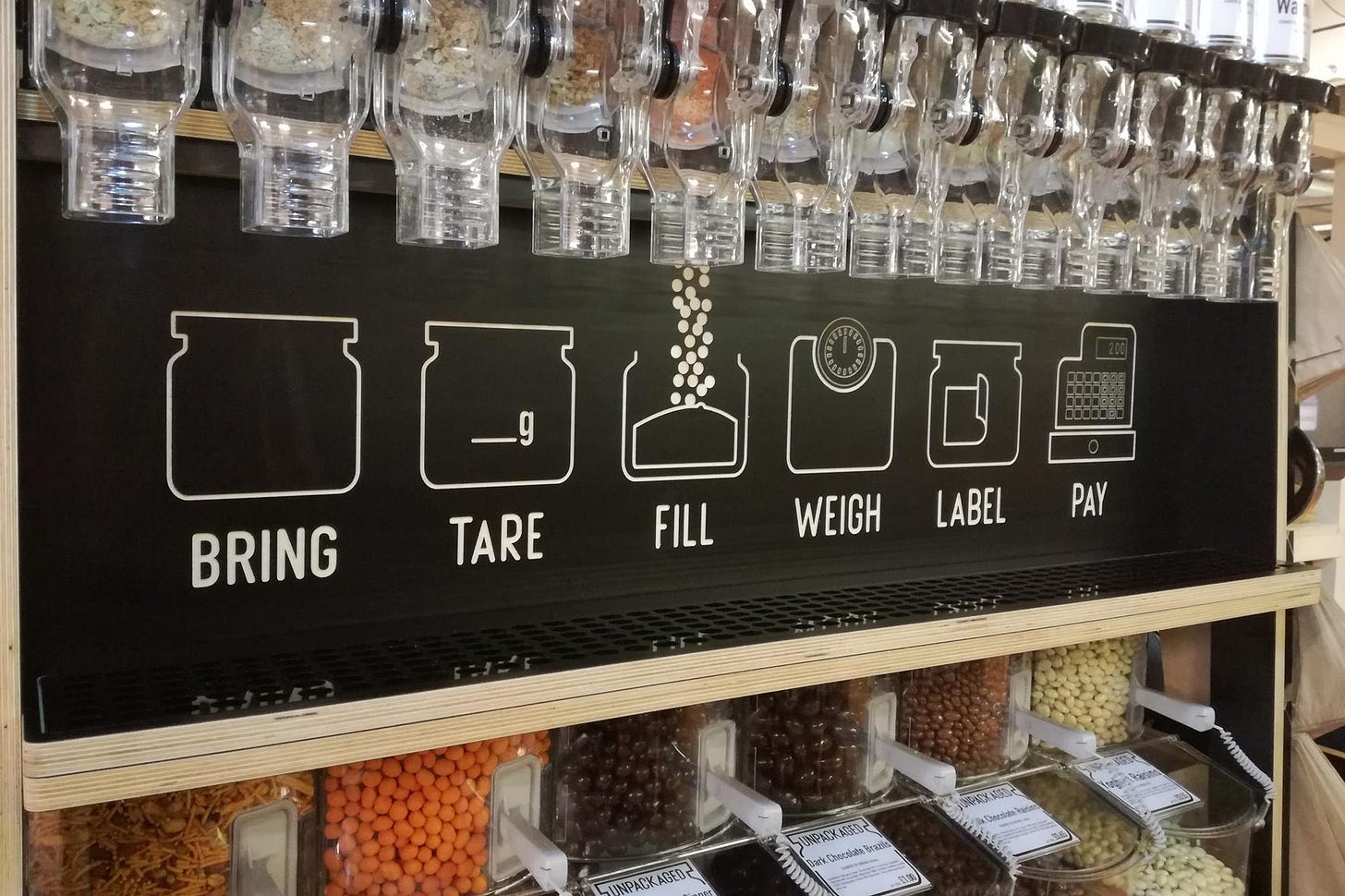The Blueprint #10
This week we talk about UK trials for refill stations in supermarket and the system changes that need to happen to scale such solutions, news about AI consumption, droughts & a Netflix documentary.
What’s The Blueprint About?
What’s The Blueprint About?
Hello & best wishes for the Gregorian new year! As I mentioned in the last publication, I’ve changed the formula a bit. The Blueprint is a newsletter sent every 2 weeks exploring service design topics in relation with the planetary crisis and vice-versa, under 10 minutes.
This new formula might be refined as I go through, so please feel free to reach out to let me know what you think your positive and negative experience reading it, and recommendations if you think of anything: hello@sidneydebaque.com
The need to reinvent the grocery shopping experience & journey to scale refill stations

Sustainability Beat is covering the different refill trials by UK supermarkets over the last couple of years and explores the different issues for this solution to scale. We could easily break them down into the HCD Venn diagram: desirability, feasibility and viability:
• Desirability first, because people are not used to shopping in bulk, bringing their own container, and the additional effort taring, filling, weighting, labeling and finally paying. Thus rightfully, as the historic rise of supermarket has partially been relying on its packaged dimension of grocery shopping. A second element hidering desirability comes from a wrong perception about pricing. The article doesn’t go in details about it, but my assumption being about the fact that containers are an additional cost that is usually invisible as packaging is part of the total product cost. Finally, there’s an hygiene factor hindering the experience, due to a perception about reusable containers not being as hygienic as throwaway packaging.
• Then there are the feasibility roadblocks. Indeed, the food system comprise of many actors. Packaging provide some standards around transports and storage that allows the many actors to have a set of standards for their processes. Taking off these standards means that there’s a need to find new ones, and to change the value chain operations. Which brings us down to the last point, viability.
• As mentioned in the article, Ashwin Prasad, Tesco CPO, shared in the 2022 trial report that such service needs to scale to be really affective and affordable. In other words, it’s expensive to operate and goes against the supermarket system of bringing down costs through standardisations. This requires the industry partners to collaborate to find these standards and bring operating costs down together.
The ambition to reduce packaging through refill stations is summed up by the 2 Cs: collaboration, to find industry standards, and communication, to break down adoption roadblocks.
From a planetary crisis & service design point of view:
Within the food distribution system, packaging accounts for about 5% of the GHGs emissions, depending on the emissions coming from other links in the chain, as pointed out by Climate Collaborative. However, it’s important to not only focus on GHGs, and to think of the impact the overall lifecycle, from material sourcing down to disposal. A UK household produces around 1 tonne of waste per year, 80% of it being packaging. Only 45% of recyclable products are being effectively recycled, the rest is incinerated (so more GHGs) or ends up in landfills, polluting ecosystems. Reducing waste is reducing production in the first place, as shown in this example.
Reducing packaging isn’t just the idea of making a product disappear, just like the move to SaaS hasn’t just been about shifting CD to websites. It needs an overall rethink of the distribution, of the behaviours and potentially business models. Getting rid of packaging has never been a product issue, it’s a service issue. The product enables a service designed on a linear model. If we’re to reduce the packaging we use, we need to rethink grocery shopping journey, the services that make it, as well as the other journeys and processes it bleeds into or rely on.
Other noteworthy news:
[[Transports / Damage control] Planes over the weekend have been diverted to multiple destinations in Europe as they couldn’t land in. Interviews account for the lack of preparation from flight services to cope with the situation and provide to passengers.
→ Read on the BBC
[Health / Global Systems] A quarter of humanity is affected by droughts, according to the U.N. This impacts people health locally, as well as global food systems, increasing prices.
→ Read on The New York Times
[AI / Crypto] AI and Crypto mining are increasing the energy used by data-centre. Centres and energy production being really thirsty, this has a direct impact on our water consumption too, and therefore… water availability.
→ Read on The Verge
[Documentary] Netflix released a 4 parts series that investigate the food system through the lens of a “twin experiment”, comparing the impact of food diet on people. More than the impact on people, it’s the contextualisation of the food system, with a heavy focus on the US’, that make it worth watching. Images can be triggering though. → Watch on Netflix
[Photos – again] On top of service design, social and ecological justice, and writing newsletters, I do enjoy photography too. The AP has published a year in photo, highlighting the impact of the planetary crisis on people, and the inequality in the way it touches populations.
→ See the collection on AP
I’m a freelance service designer who helps public and private organisations intervene to mitigate the impact of the planetary crisis on humans and vice-versa.
You can contact me about for questions, comments or consulting at hello@sidneydebaque.com
